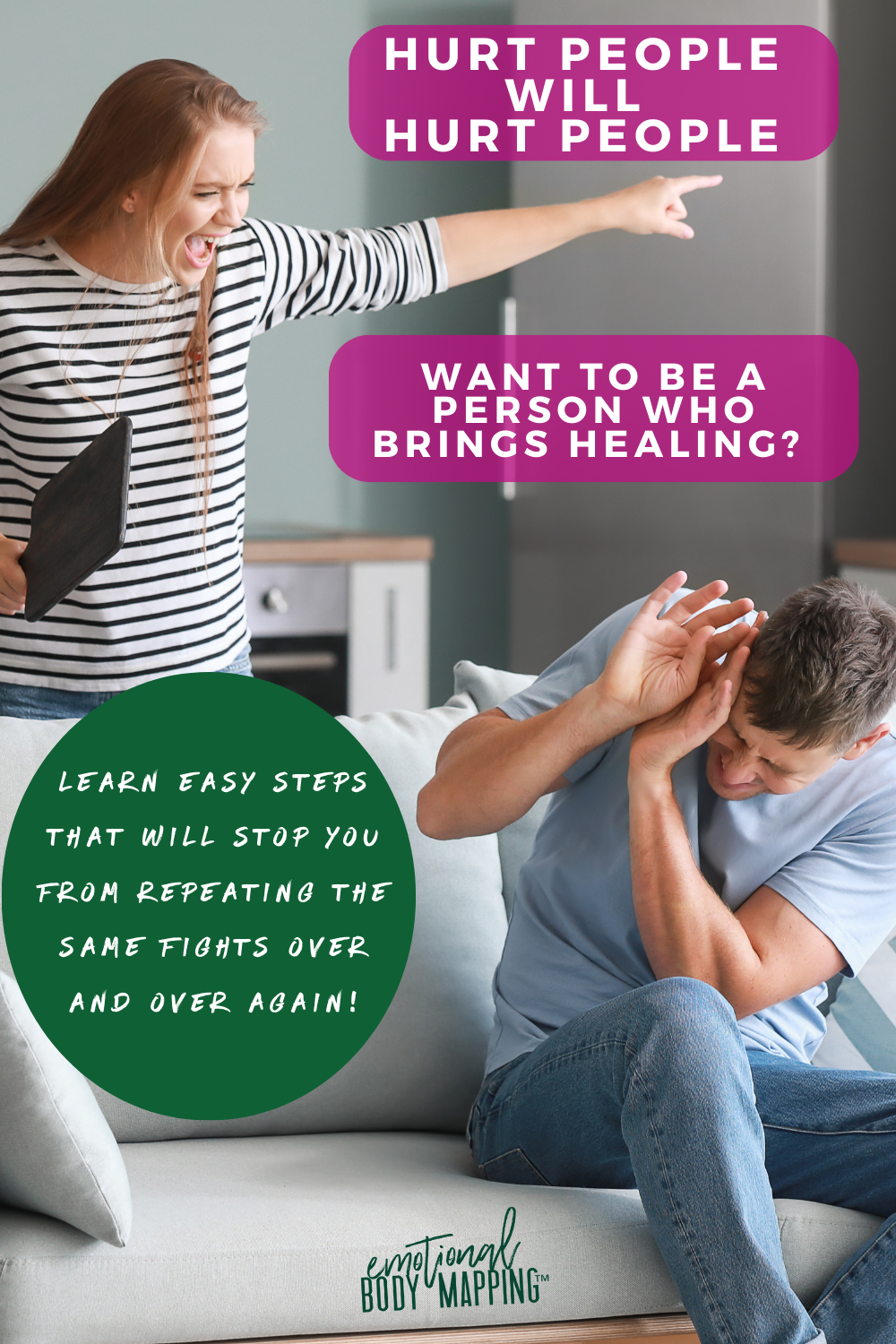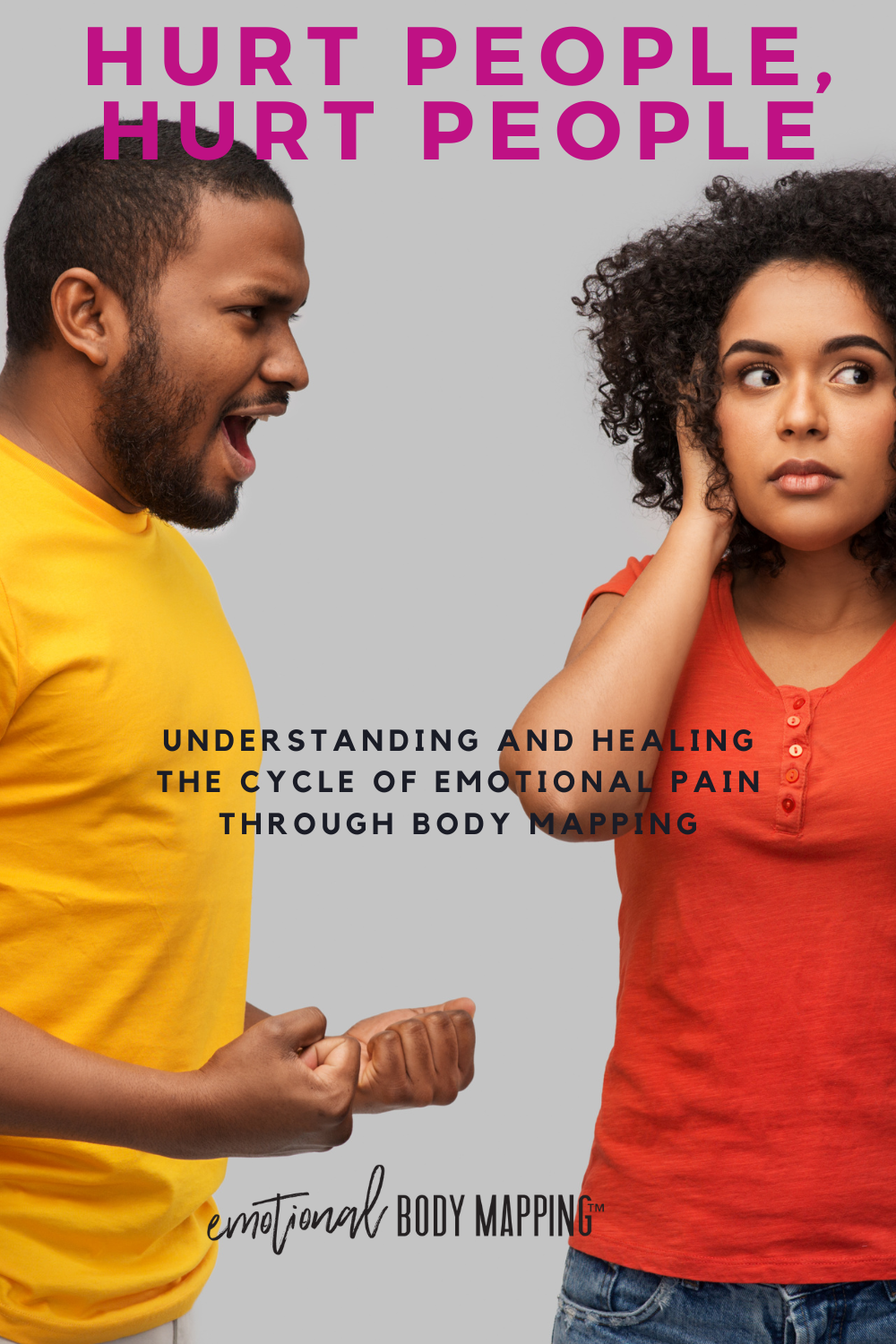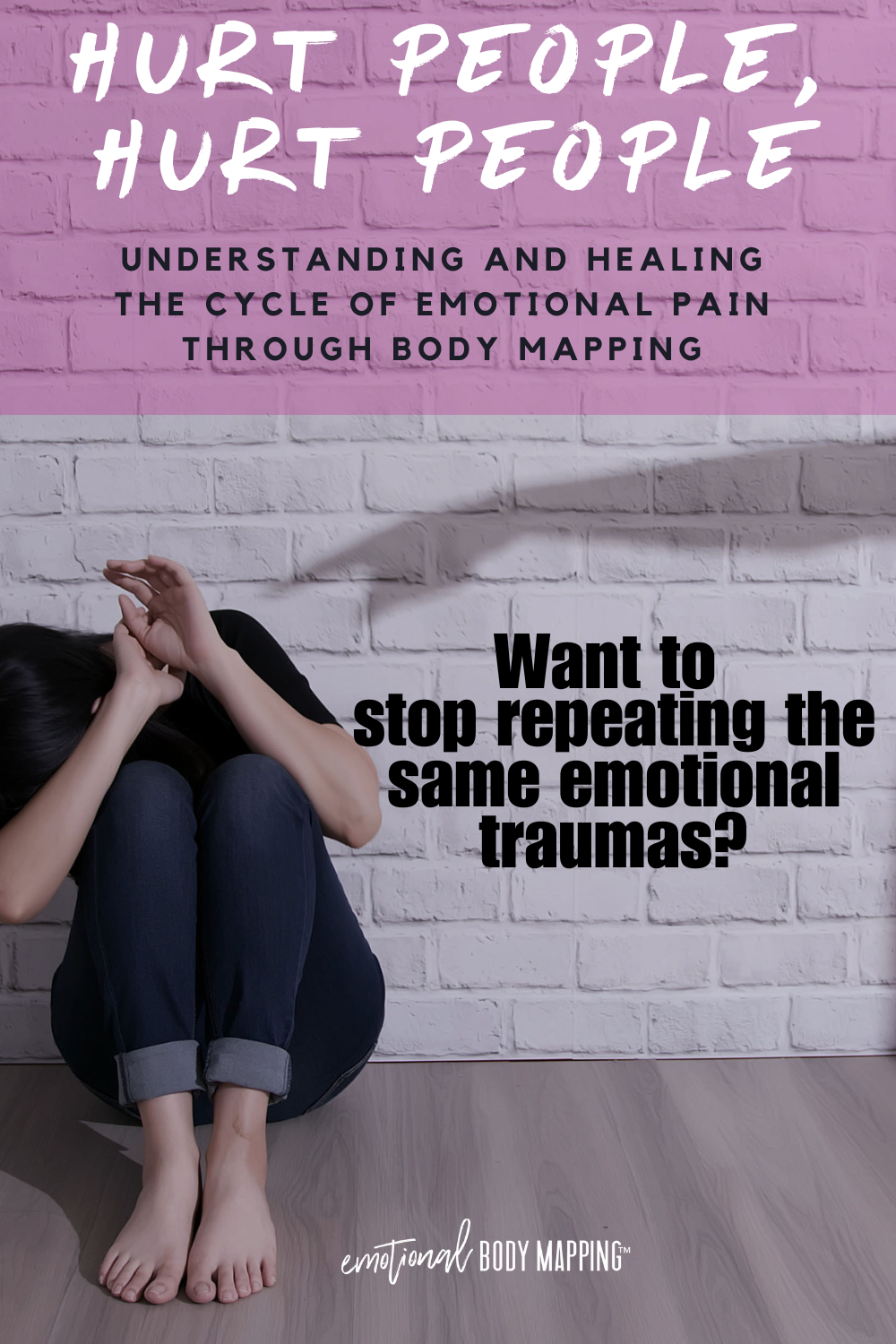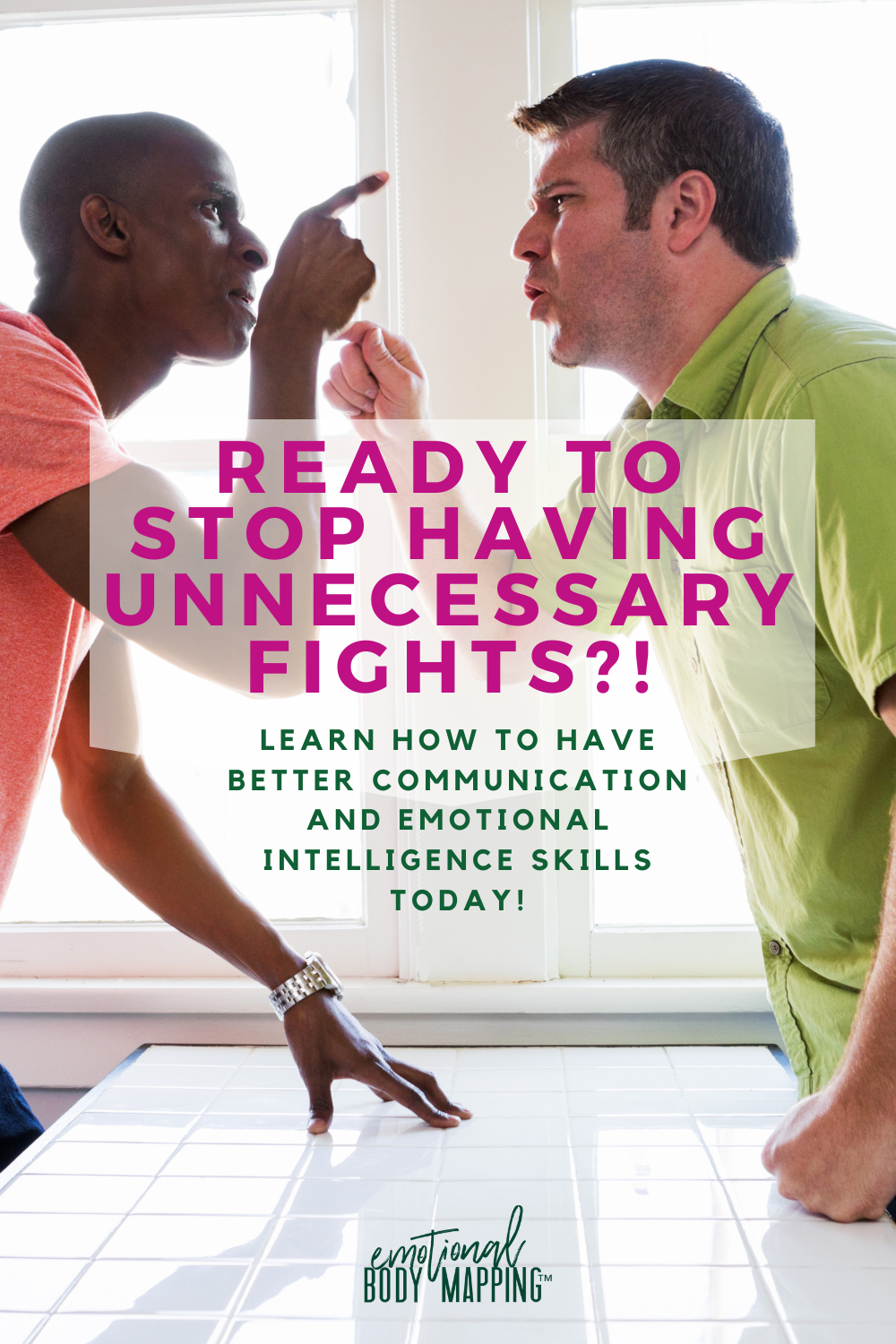Hurt People Hurt People: Understanding and Healing the Cycle of Emotional Pain through Body Mapping
Have you ever felt like an emotional hurricane, brewing a storm of anger or sadness, ready to wreak havoc at a moment's notice? It's as if one small trigger can set off a chain reaction, leaving destruction in its wake. Yeah, we've all been there. But what if this storm was your everyday reality, a relentless cycle of emotional pain that seems impossible to escape? Exhausting doesn't even begin to cover it.
You might find yourself lashing out at loved ones, constantly walking on eggshells, or feeling like you're incapable of forming meaningful connections. Deep down, you know you're not a bad person, but these emotional rollercoasters make it difficult to believe that sometimes. And let's face it – it's not just you who's affected. The people around you are caught in the crossfire, too. But here's the thing: you're not alone, and there's hope for you yet.
In this eye-opening journey, we're about to embark on together, we'll dive deep into the world of body mapping – a transformative tool that can help you understand, confront, and ultimately heal the cycle of emotional pain. No more feeling like you're at the mercy of your emotions; it's time to take back control and break free from the hurt that's holding you back.
By exploring the connection between our emotions and the physical sensations they create, we'll shed light on the hidden sources of our pain and learn how to address them head-on. With every step we take, you'll gain a greater understanding of yourself and the power you possess to rewrite your emotional narrative.
So, are you ready to leave that storm behind and step into a brighter, more balanced future? Let's do this – together.
Part 1: The Connection Between Emotional Pain and Physical Tension
The link between emotional pain and physical tension is a fascinating one. Often, unresolved emotional pain can manifest in our bodies as tension, discomfort, or even chronic pain. This is because our brains and bodies are closely connected, and our emotional experiences can have a profound impact on our physical well-being.
For example, consider the feeling of stress. When we're stressed, our bodies often respond by tightening our muscles, particularly in the neck and shoulders. Over time, this tension can lead to chronic pain or discomfort, signaling that there's unresolved emotional pain that needs to be addressed.
Part 2: The Power of Body Mapping
Body mapping is an effective practice that involves using the body as a tool to understand and heal emotional pain. By paying attention to the sensations in our bodies, we can begin to identify the areas that are holding onto emotional pain and work to release that pain.
To start body mapping, find a quiet and comfortable space where you can focus on your body. Close your eyes and take a few deep breaths, allowing your body to relax. Start to scan your body from head to toe, noticing any areas of tension or discomfort. As you identify these areas, pay attention to any memories or emotions that come up. These memories and emotions can provide insight into the emotional pain that is stored in your body.
Part 3: Understanding Emotional Pain and Triggers
Once you have identified areas of tension and discomfort in your body, it's important to understand the emotional pain that is behind these sensations. Emotional pain can be caused by a variety of factors, including past traumas, negative self-talk, and relationship issues.
Identifying your emotional triggers is an important part of understanding your emotional pain. Triggers are experiences or situations that cause a strong emotional response. For example, if you have experienced abandonment in the past, the fear of abandonment may be a trigger for you. When you encounter situations that remind you of abandonment, you may feel anxious or scared, and these emotions can manifest as physical tension in your body.
Part 4: Breaking the Cycle of Emotional Pain
The cycle of emotional pain can be difficult to break, but it is possible with self-awareness and self-accountability. Self-accountability means taking responsibility for your own emotional healing and recognizing that your emotional pain may impact those around you.
One of the most important things you can do to break the cycle of emotional pain is to take care of yourself. This means practicing self-care and self-compassion, setting healthy boundaries in your relationships, and seeking professional help if needed. When you prioritize your own
emotional healing, you are less likely to perpetuate emotional pain in your interactions with
others.
Shame game Are you ready to stop living in overwhelm, people-pleasing, and saying yes to everything?
Want to finish those projects you started and have better consistency?
Do you know inherently your body and mind are connected but are not sure exactly how to understand and achieve results connecting with it?
Do you feel like it's your fault you did not get everything done and then slip into the magical SHAME SPIRAL?!
Get the No Brainer ENDING THE SHAME GAME: Stop Shame spiraling for good!
You will…
Realize the current emotions and bodily sensations that are holding you back.
Recognize the tools used to stop the shame spiraling and,
Regulate your emotions.
For only $11 you will receive:
6 VIDEOS to break down the most common areas of the body that can bring about helplessness, powerlessness, and pain in the body causing shame, freezing, and stopping us in our tracks.
6 WORKSHEETS that include meditations, mantras, and physical/emotional exercises to help begin to regulate and recognize your patterns and behaviors and help shift them into self-serving and proactive behaviors.
THE DIGITAL BOOK, The Body Speaks: Conversations on Emotional Body Mapping. In this book, you will learn even deeper about the practices, delve into the baseline principles of emotional body mapping and how to self-regulate and get out of that shame spiral!
Part 5: Practical Solutions for Emotional Pain
In addition to body mapping, there are several practical solutions for healing emotional pain and breaking the cycle of hurt people hurting people.
Practice Mindfulness:
Mindfulness involves being present at the moment and accepting your thoughts and emotions without judgment. By practicing mindfulness, you can become more aware of your emotional triggers and learn to respond to them in a healthy way.
Practice Self-Compassion:
Self-compassion means treating yourself with the same kindness and understanding you would offer a friend. When you are experiencing emotional pain, it's important to be gentle and compassionate with yourself.
Seek Professional Help:
If you are struggling with emotional pain, it's important to seek professional help. This may include therapy, counseling, or support groups. A professional can provide guidance and support as you work through your emotional pain.
Develop Healthy Coping Mechanisms:
Healthy coping mechanisms, such as exercise, meditation, and creative expression, can help to relieve stress and promote emotional healing. Experiment with different coping mechanisms to find what works best for you.
Set Healthy Boundaries:
Setting healthy boundaries in your relationships is crucial for emotional healing. This means being clear about your needs and expectations and communicating them assertively. It also means recognizing when a relationship is toxic or harmful and taking steps to protect yourself.
Practice Forgiveness:
Forgiveness is a powerful tool for healing emotional pain. It doesn't mean forgetting or condoning harmful behavior, but rather letting go of anger and resentment towards the person who caused you pain. Forgiveness can help you move forward and break the cycle of emotional pain.
Cultivate Emotional Intelligence:
Emotional intelligence involves recognizing, understanding, and managing your emotions and those of others. By developing emotional intelligence, you can improve your ability to navigate difficult situations and manage your emotional triggers more effectively.
Build a Support System:
Surround yourself with people who understand and support your emotional healing journey. Having a strong support system can make it easier to work through your emotional pain and find the encouragement you need to move forward.
Educate Yourself:
Learn about the sources and effects of emotional pain, and seek out resources to help you understand and heal. Knowledge is power, and understanding the intricacies of emotional pain can help you better manage and heal it.
Be Patient with Yourself:
Healing emotional pain is a process that takes time and effort. Be patient with yourself as you work through your pain, and remember that progress may be slow and nonlinear. Keep going, and celebrate your successes along the way.
By incorporating practices such as body mapping, mindfulness, self-compassion, forgiveness, and other practical solutions, we can begin to heal from emotional pain and break the cycle of hurt people hurting people. This journey toward healing requires patience, self-awareness, and self-accountability, but it is possible to create a brighter, more peaceful future for ourselves and those around us.
Embracing the Light at the End of the Tunnel
Think about it: you've made it this far, and that's no small feat. The journey toward healing is undoubtedly challenging, but you've faced it head-on, with courage and determination. It's natural to feel a little overwhelmed at times. After all, breaking the cycle of emotional pain is a monumental task. But remember, you've already taken the first crucial steps toward regaining control and transforming your life.
Let's recap the invaluable insights you've gained from this journey: you've discovered the power of body mapping, how to understand your emotional triggers and the importance of taking responsibility for your own healing. This knowledge is now a part of you, and it will serve as a guiding light as you continue to forge your path to a healthier, more balanced emotional state.
Keep in mind that healing isn't linear, and it's okay to stumble or feel discouraged along the way. You're not alone, and it's essential to be patient with yourself. Each small victory, no matter how insignificant it may seem, is a testament to your strength and resilience. You're not just surviving; you're thriving.
So, take a deep breath and embrace the change. Continue practicing body mapping, mindfulness, self-compassion, and forgiveness. Reach out for support when needed and never forget that you are worthy of healing, happiness, and healthy relationships.
As you embark on the next chapter of your journey, remember that you possess the power to break the cycle of hurt people hurting people. You have the strength to rise above the emotional storms and, in doing so, inspire others to follow in your footsteps. It's time to reclaim your life, nurture your emotional well-being, and become the person you've always known you could be.
Stand tall, be proud of your progress, and keep pushing forward – because you, my friend, are an unstoppable force of healing and transformation.
Thank you for reading this post. I hope the information and insights I've shared have been helpful to you. If you're struggling with anxiety, depression, overwhelm, or chronic pain, emotional body mapping facilitation can help you find relief and healing.
I offer 1:1 coaching sessions for emotional body mapping, and I'm here to support you on your journey toward better emotional and physical health. If you're ready to take the first step towards healing and want to work with me, I encourage you to reach out and schedule a free breakthrough session. However, I understand that 1:1 coaching may not be feasible or desirable for everyone at this time. That's why I offer a range of other resources, including books, courses, and self-care starter kits, designed to help you manage your symptoms and find relief from anxiety, depression, overwhelm, or chronic pain.
I believe in accessibility and offer a self-care starter course starting at just $11, so you can get the help you need without breaking the bank. Together, we can work towards healing your emotional and physical pain and help you create a healthier, happier, and more fulfilling life.
So, if you're ready to take the next step toward emotional healing, I invite you to explore my website and check out my range of resources. Let's work together toward a brighter future.












